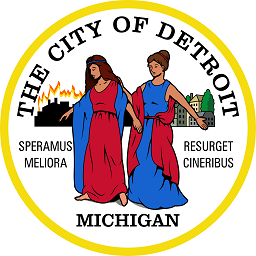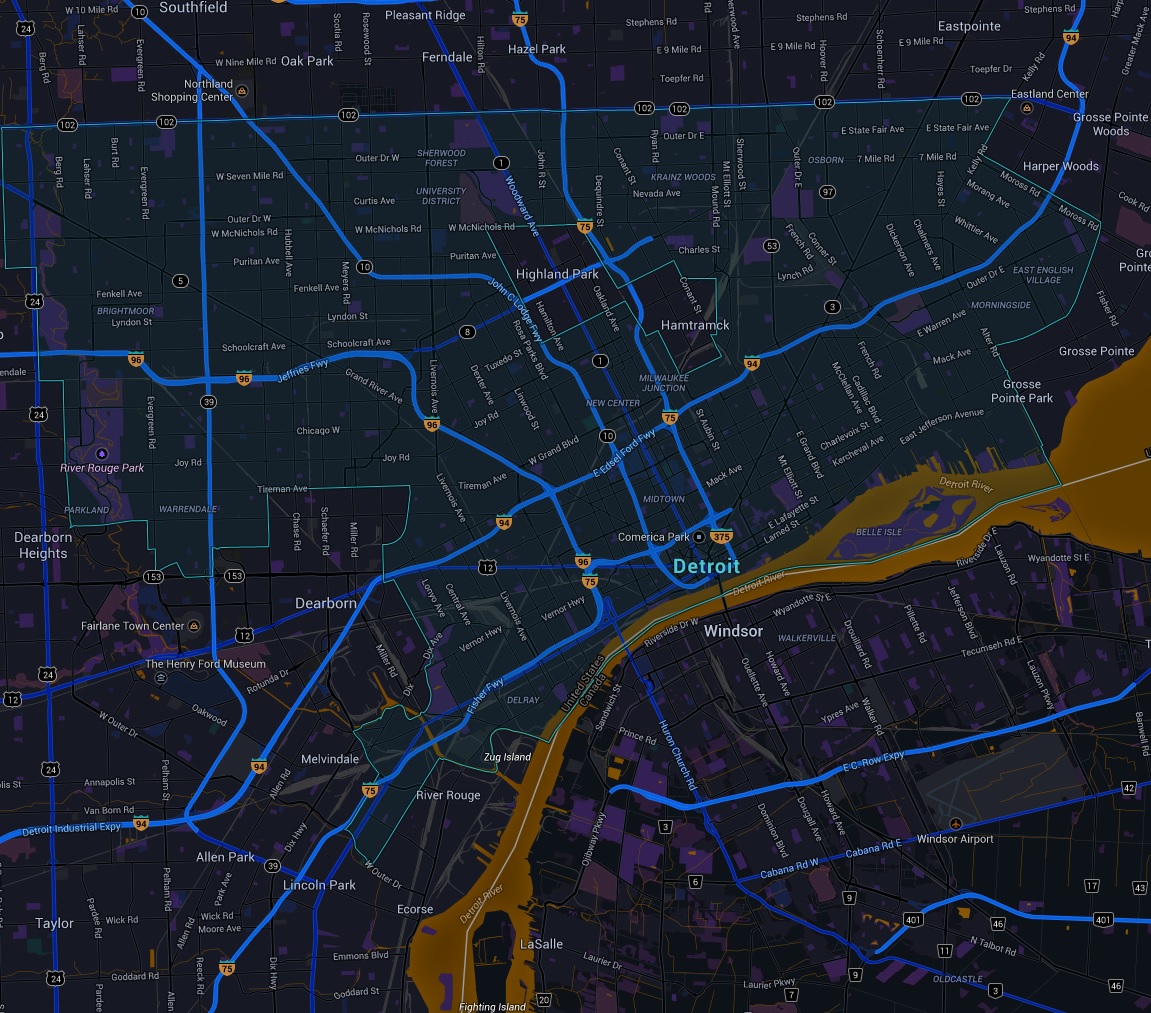Difference between revisions of "Detroit"
(→Corvus: Emo-Goth Sabbat) |
(→The Sabbat) |
||
| Line 122: | Line 122: | ||
== <span style="color:#800000;">'''The Sabbat''' == | == <span style="color:#800000;">'''The Sabbat''' == | ||
| + | === <span style="color:#800000;"> '''A Murder of Crows:''' Emo-Goth Sabbat === | ||
| + | *<span style="color:#800000;"> -- | ||
| + | *<span style="color:#800000;"> -- | ||
| + | *<span style="color:#800000;"> -- | ||
| + | *<span style="color:#800000;"> -- | ||
| + | *<span style="color:#800000;"> -- | ||
| + | |||
=== <span style="color:#800000;"> '''Cerberus:''' Newcomers to Detroit === | === <span style="color:#800000;"> '''Cerberus:''' Newcomers to Detroit === | ||
<span style="color:#800000;"> ''Cerberus is a relatively new pack and not just to Detroit.'' | <span style="color:#800000;"> ''Cerberus is a relatively new pack and not just to Detroit.'' | ||
Revision as of 22:51, 22 April 2015
Contents
- 1 Quote
- 2 Appearance
- 3 Introduction
- 4 City Device
- 5 Motto
- 6 Climate
- 7 Districts
- 8 Demonym
- 9 Economy
- 10 Geography
- 11 History
- 12 Population
- 13 Arenas
- 14 Attractions
- 15 Bars and Clubs
- 16 Cemeteries
- 17 City Government
- 18 Crime
- 19 Citizens of the City
- 20 Current Events
- 21 Fortifications
- 22 Galleries
- 23 Holy Ground
- 24 Hospitals
- 25 Hotels & Hostels
- 26 Landmarks
- 27 Mass Media
- 28 Monuments
- 29 Museums
- 30 Parks
- 31 Private Residences
- 32 Restaurants
- 33 Ruins
- 34 Schools
- 35 Shopping
- 36 Telecommunications
- 37 Theaters
- 38 Transportation
- 39 The Sabbat
- 39.1 A Murder of Crows: Emo-Goth Sabbat
- 39.2 Cerberus: Newcomers to Detroit
- 39.3 Eastside Hoodoo Posse: White gangsta wannabees
- 39.4 Gangsta Funk
- 39.5 Grave Interest: A Coven of Necronomists
- 39.6 Les Partisans: Parisian French Transplants
- 39.7 Money Shot: The Catharist Elite
- 39.8 Reavers: A Pack of Blackhand Killers
- 40 Websites
Quote

“Detroit is largely composed, today, of seemingly endless square miles of low-density failure.” -― Jane Jacobs, The Death and Life of Great American Cities
Appearance
Introduction
Detroit is the most populous city in the U.S. state of Michigan and the largest city on the United States–Canada border. It is the seat of Wayne County, the most populous county in the state. It is a primary business, cultural, financial and transportation center in the Metro Detroit area, a region of 5.3 million people. It is a major port on the Detroit River, a strait that connects the Great Lakes system to the Saint Lawrence Seaway. It was founded on July 24, 1701, by the French explorer and adventurer Antoine Laumet de La Mothe, sieur de Cadillac and a party of settlers.
The Detroit area emerged as a significant metropolitan region within the United States in the early 20th century, and this trend only hastened in the 1950s and 1960s, with the construction of a regional freeway system. Detroit is the center of a three-county Urban Area (population 3,734,090, area of 1,337 square miles (3,460 km2), a 2010 United States Census) six-county Metropolitan Statistical Area (2010 Census population of 4,296,250, area of 3,913 square miles [10,130 km2]), and a nine-county Combined Statistical Area (2010 Census population of 5,218,852, area of 5,814 square miles [15,060 km2]). The Detroit–Windsor area, a commercial link straddling the Canada–U.S. border, has a total population of about 5,700,000. The Detroit metropolitan region holds roughly one-half of Michigan's population.
Known as the world's automotive center, "Detroit" is a metonym for the American automobile industry. Detroit's auto industry was an important element of the American "Arsenal of Democracy" supporting the Allied powers during World War II. It is an important source of popular music legacies celebrated by the city's two familiar nicknames, the Motor City and Motown. Other nicknames arose in the 20th century, including City of Champions, beginning in the 1930s for its successes in individual and team sport; The D; Hockeytown (a trademark owned by the city's NHL club, the Red Wings); Rock City (after the Kiss song "Detroit Rock City"); and The 313 (its telephone area code).
Between 2000 and 2010 the city's population fell by 25 percent, changing its ranking from the nation's 10th-largest city to 18th. In 2010, the city had a population of 713,777, more than a 60 percent drop from a peak population of over 1.8 million at the 1950 census. This resulted from suburbanization, industrial restructuring and the decline of Detroit's economic strength. Following the shift of population and jobs to its suburbs or other states or nations, the city focused on reestablishing itself as the metropolitan region's employment and economic center. Downtown Detroit has held an increased role as an entertainment destination in the 21st century, with the restoration of several historic theaters, several new sports stadiums, three new stadiums, and a riverfront revitalization project. More recently, the population of Downtown Detroit, Midtown Detroit, and a handful of other neighborhoods has increased. Many other neighborhoods remain distressed and even heavily abandoned.
The Governor of Michigan, Rick Snyder, declared a financial emergency for the city in March 2013, appointing an emergency manager. On July 18, 2013, Detroit filed the largest municipal bankruptcy case in U.S. history. It was declared bankrupt by Judge Steven W. Rhodes of the Bankruptcy Court for the Eastern District of Michigan on December 3, 2013; he cited its $18.5 billion debt and declared that negotiations with its thousands of creditors were unfeasible. On November 7, 2014, Judge Rhodes approved the city's bankruptcy plan, allowing the city to begin the process of exiting bankruptcy. The City of Detroit successfully left Chapter 9 municipal bankruptcy with all finances handed back to Detroit beginning at midnight on December 11, 2014.
City Device
Motto
Speramus Meliora; Resurget Cineribus -- (Latin: We Hope For Better Things; It Shall Rise From the Ashes)
Climate
Detroit and the rest of southeastern Michigan have a humid continental climate which is influenced by the Great Lakes. Winters are cold, with moderate snowfall and temperatures not rising above freezing on an average 44 days annually, while dropping to or below 0 °F (−18 °C) on an average 4.4 days a year; summers are warm to hot with temperatures exceeding 90 °F (32 °C) on 12 days.[98] The warm season runs from May to September. The monthly daily mean temperature ranges from 25.6 °F (−3.6 °C) in January to 73.6 °F (23.1 °C) in July. Official temperature extremes range from 105 °F (41 °C) on July 24, 1934 down to −21 °F (−29 °C) on January 21, 1984; the record low maximum is −4 °F (−20 °C) on January 19, 1994, while, conversely the record high minimum is 80 °F (27 °C) on August 1, 2006, the most recent of five occurrences. A decade or two may pass between readings of 100 °F (38 °C) or higher, which last occurred July 17, 2012. The average window for freezing temperatures is October 20 thru April 22, allowing a growing season of 180 days.
Precipitation is moderate and somewhat evenly distributed throughout the year, although the warmer months such as May and June average more, averaging 33.5 inches (850 mm) annually, but historically ranging from 20.49 in (520 mm) in 1963 to 47.70 in (1,212 mm) in 2011. Snowfall, which typically falls in measurable amounts between November 15 through April 4 (occasionally in October and very rarely in May), averages 42.5 inches (108 cm) per season, although historically ranging from 11.5 in (29 cm) in 1881−82 to 94.9 in (241 cm) in 2013−14. A thick snowpack is not often seen, with an average of only 27.5 days with 3 in (7.6 cm) or more of snow cover. Thunderstorms are frequent in the Detroit area. These usually occur during spring and summer.
Districts
Demonym
Detroiter
Economy
Geography
History
Beginnings
The first recorded mention of the site was in 1670, when French missionaries found a stone idol venerated by the Indians there and destroyed it with an axe. Early settlers planted twelve missionary pear trees "named for the twelve Apostles" on the grounds of what is now Waterworks Park.[4] French officer Antoine de la Mothe Cadillac founded Detroit in 1701 The Indians lost at the Siege of Fort Detroit during Pontiac's Rebellion in 1763. The American surrender, following the British Siege of Detroit during the War of 1812.
The city name comes from the Detroit River (French: le détroit du Lac Érie), meaning the strait of Lake Erie, linking Lake Huron and Lake Erie; in the historical context, the strait included Lake St. Clair and the St. Clair River.[5] The sieur de Cadillac in 1698 proposed to his government in Paris that Detroit be established as a shelter for displaced Indian allies. Paris approved and in 1701 Cadillac led a party of 100 Frenchmen to established a post called Fort Pontchartrain du Détroit, naming it after his sponsor the comte de Pontchartrain, Minister of Marine under Louis XIV. In 1704 he was given ownership over the strenuous opposition of officials in New France. An investigation by de Pontchartrain showed Cadillac was a tyrannical profiteer whose mischief hurt the French cause, so Cadillac was removed and sent to faraway New Orleans as governor of Louisiana.[6]
Ste. Anne de Détroit, founded 1701, is the second oldest continuously operating Catholic parish in the United States; it was the first building erected in Detroit.[1]
Grants of free land attracted families to Detroit, which grew to 800 people in 1765. The main business was trading furs with the Indians, using goods supplied from Montreal.[7] It was the largest French village between Montreal and New Orleans.[8] Francois Marie Picoté, sieur de Belestre (Montreal 1719–1793), the last French commander at Fort Detroit (1758–1760), surrendered on November 29, 1760 to the British. They shortened the name to Detroit. The City of Detroit (from Canada Shore), 1872, by A. C. Warren
Demonstrating their independent power, several tribes in the region collaborated in Pontiac's Rebellion in 1763; they overran many smaller forts but could not subdue Detroit.
Population
- -- City (688,701) - 2013 census
- -- Urban (3,734,090) - 2013 census
- -- Metro Area (4,292,060) - 2013 census
Arenas
Attractions
Bars and Clubs
Cemeteries
City Government
Crime
Citizens of the City
Current Events
Fortifications
Galleries
Holy Ground
Hospitals
Hotels & Hostels
Landmarks
Mass Media
Monuments
Museums
Parks
Private Residences
Restaurants
Ruins
Schools
Shopping
Telecommunications
Theaters
Detroit Masonic Temple
Transportation
The Sabbat
A Murder of Crows: Emo-Goth Sabbat
- --
- --
- --
- --
- --
Cerberus: Newcomers to Detroit
Cerberus is a relatively new pack and not just to Detroit.
- --
- --
- --
Eastside Hoodoo Posse: White gangsta wannabees
- --
- --
- --
- --
- --
Gangsta Funk
- -- Dekeeya Grant -- Ductus -- Brujah Antitribu
- -- Chill-C -- Pack Priest -- Brujah Antitribu
- --
- --
Grave Interest: A Coven of Necronomists
- --
- --
- --
- --
- --
Les Partisans: Parisian French Transplants
Les Partisans are a group of mostly Parisian French Sabbat that came to Detroit after World War II in the company of Dylan Bruce."
- --
- --
- --
- --
- --
Money Shot: The Catharist Elite
- --
- --
- --
- --
- --
Reavers: A Pack of Blackhand Killers
- --
- --
- --
- --
- --
Websites
http://en.wikipedia.org/wiki/Detroit
http://abigailanddolley.blogspot.com/2009/12/detroit-case-study-part-1.html
http://www.angelfire.com/de2/detroitpix/
http://www.detroitno2.com/v2/discussions/detroit-masonic-temple-from-grandeur-to-ghetto/
http://thereafterish.com/tag/theatre-bizarre/
http://www.inexpensive-vacation-ideas.com/Things-to-do-in-Detroit.html


